Ever wondered what keeps our power grids running smoothly in this digital age? The answer lies in the rigorous testing of distribution transformers, the unsung heroes of our electrical infrastructure.
Distribution transformer testing is crucial for ensuring grid reliability and efficiency in smart energy systems. It involves advanced protocols, diagnostic techniques, and data analysis to verify transformer performance, predict failures, and optimize grid operations in the face of evolving energy demands.

As someone who's spent years in the power industry, I've seen firsthand how critical transformer testing is to our modern energy systems. Let's dive into the world of distribution transformer testing and explore its impact on our evolving smart grids.
Advanced Testing Protocols: Safeguarding Smart Grid Integrity and Performance?
Have you ever considered how we ensure our smart grids can handle the complex demands of modern energy distribution? Advanced testing protocols are the key to safeguarding grid integrity and performance.
Advanced testing protocols for distribution transformers involve comprehensive electrical, thermal, and mechanical tests. These protocols use state-of-the-art equipment and techniques to assess transformer health, efficiency, and compatibility with smart grid technologies.
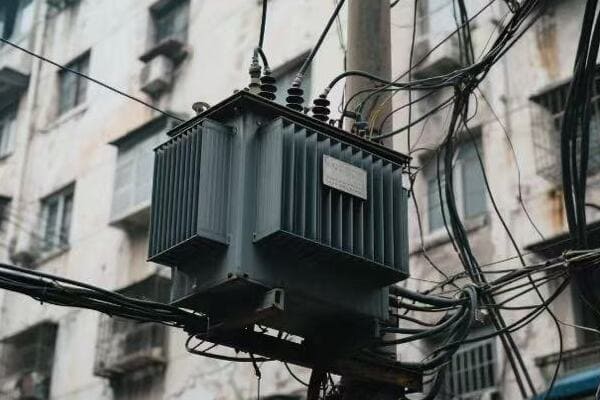
Let's dive into the world of advanced transformer testing:
Electrical Performance Testing
Ensuring power quality and efficiency:
- Load loss and no-load loss measurements
- Impedance and reactance tests
- Insulation resistance and power factor testing
Thermal Performance Evaluation
Assessing heat management capabilities:
- Temperature rise tests under various load conditions
- Thermal imaging for hotspot detection
- Cooling system efficiency evaluation
Mechanical Integrity Checks
Verifying structural soundness:
- Vibration analysis during operation
- Short-circuit withstand capability tests
- Pressure and vacuum tests for tank integrity
Smart Grid Compatibility Testing
Ensuring seamless integration with modern grids:
- Communication protocol verification
- Cyber security vulnerability assessments
- Interoperability tests with other smart grid components
Environmental Stress Testing
Simulating real-world conditions:
- Climate chamber tests for extreme temperatures
- Salt spray tests for coastal environments
- Seismic simulation for earthquake-prone areas
| Test Category | Purpose | Smart Grid Relevance |
|---|---|---|
| Electrical | Verify power quality | Ensure efficient energy distribution |
| Thermal | Assess heat management | Prevent overheating in high-load scenarios |
| Mechanical | Confirm structural integrity | Ensure long-term reliability |
| Smart Grid Compatibility | Validate integration | Enable advanced grid functionalities |
| Environmental | Simulate real-world stress | Ensure performance in diverse conditions |
I remember a project where we were testing a new line of smart transformers for a major city upgrade. The electrical tests were standard, but the smart grid compatibility tests were eye-opening. We discovered that one model had a minor firmware issue that could have caused communication failures in certain grid conditions. Catching this before deployment potentially saved the city from major disruptions. The project manager told me, "This is why we test. You've just saved us from a nightmare scenario."
Another fascinating experience was conducting environmental stress tests on transformers destined for a coastal smart grid project. We simulated years of salt spray exposure and found that our standard protective coatings weren't up to the task. This led to the development of a new nano-coating that significantly extended the transformer's lifespan in harsh coastal environments. The lead engineer remarked, "We're not just testing transformers; we're evolving them."
These experiences have shown me that advanced testing protocols are not just about ticking boxes. They're about pushing the boundaries of what's possible in transformer technology and ensuring that our smart grids have the robust, reliable foundation they need to function effectively. As our grids become smarter and more complex, these testing protocols will continue to evolve, playing a crucial role in shaping the future of our energy infrastructure.
Reliability Through Rigorous Examination: Modern Approaches to Transformer Diagnostics?
In the world of smart grids, reliability is paramount. But how do modern diagnostic approaches ensure the dependability of our distribution transformers?
Modern transformer diagnostics employ a combination of non-invasive testing, real-time monitoring, and advanced analytics. These approaches provide comprehensive insights into transformer health, enabling proactive maintenance and ensuring long-term reliability in smart grid environments.
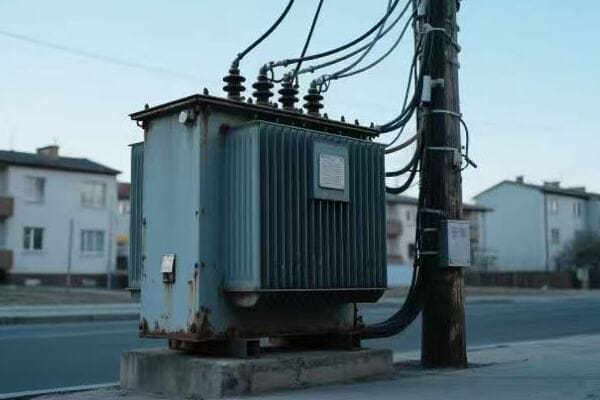
Let's explore the cutting-edge diagnostic techniques revolutionizing transformer reliability:
Dissolved Gas Analysis (DGA)
Detecting internal faults before they escalate:
- Continuous monitoring of gases dissolved in transformer oil
- AI-driven interpretation of gas compositions
- Early warning system for developing faults
Frequency Response Analysis (FRA)
Assessing mechanical integrity non-invasively:
- Detection of winding deformations and core movements
- Comparison with baseline signatures for accurate diagnostics
- Identification of potential issues before they cause failures
Partial Discharge (PD) Monitoring
Identifying insulation weaknesses:
- Real-time detection of partial discharges within the transformer
- Use of acoustic and electrical sensors for precise localization
- Trend analysis for predicting insulation degradation
Thermal Imaging and Acoustic Monitoring
Detecting hotspots and abnormal sounds:
- Infrared cameras for identifying temperature anomalies
- Acoustic sensors for detecting unusual operational sounds
- Integration with AI for automated pattern recognition
Oil Quality Analysis
Assessing the health of insulating oil:
- Regular sampling and testing of transformer oil
- Analysis of acidity, moisture content, and dielectric strength
- Trending of oil quality parameters for predictive maintenance
| Diagnostic Technique | What It Detects | Impact on Reliability |
|---|---|---|
| Dissolved Gas Analysis | Internal faults | Prevents catastrophic failures |
| Frequency Response Analysis | Mechanical issues | Ensures structural integrity |
| Partial Discharge Monitoring | Insulation weaknesses | Extends transformer lifespan |
| Thermal & Acoustic Monitoring | Operational anomalies | Enables immediate intervention |
| Oil Quality Analysis | Insulation degradation | Maintains optimal performance |
I once worked on a project implementing a comprehensive diagnostic system for a large urban substation. We installed continuous DGA monitors on critical transformers. Within months, one unit showed a sudden increase in combustible gases. We immediately took it offline for inspection and found a developing arc in the windings. The utility manager said, "Your diagnostics just saved us from a potential explosion and citywide blackout."
Another eye-opening experience was using FRA on a transformer that had been through a severe thunderstorm. The results showed subtle changes in the winding structure, invisible to the naked eye but potentially catastrophic if left unchecked. We were able to perform targeted repairs, avoiding a complete replacement. The maintenance team leader remarked, "It's like giving our transformers a full-body MRI. We're catching issues we never could before."
These experiences have shown me that modern diagnostic approaches are not just about maintaining transformers; they're about predicting and preventing issues before they occur. In the context of smart grids, where reliability is critical, these advanced diagnostics are the unsung heroes keeping our power flowing smoothly. As we continue to refine these techniques, we're not just extending the life of our transformers; we're ensuring the resilience and reliability of our entire energy infrastructure.
Smart Energy Challenges: Adapting Testing Methods for Next-Generation Grids?
The rise of smart grids brings new challenges to transformer testing. How are we adapting our testing methods to meet the demands of next-generation energy systems?
Adapting testing methods for next-generation grids involves integrating digital simulation, real-time data analysis, and interoperability testing. These advanced techniques ensure transformers can handle the dynamic loads, bidirectional power flows, and complex communication requirements of smart energy systems.
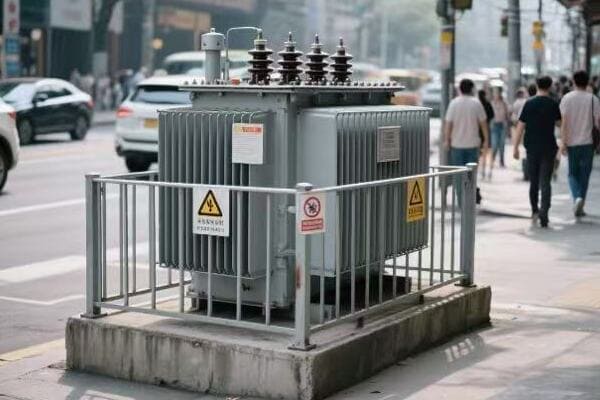
Let's explore how testing methods are evolving to meet smart energy challenges:
Digital Twin Simulation
Creating virtual replicas for comprehensive testing:
- Detailed digital models of transformers and surrounding grid
- Simulation of various operational scenarios and stress conditions
- Predictive analysis of long-term performance and potential issues
Real-Time Data Analytics
Processing and analyzing data streams during tests:
- Integration of big data platforms with testing equipment
- AI-driven analysis of test results in real-time
- Immediate insights and adjustments during testing procedures
Interoperability Testing
Ensuring seamless integration with smart grid components:
- Communication protocol verification with other grid devices
- Testing of data exchange and command execution capabilities
- Validation of transformer response to grid management signals
Cybersecurity Vulnerability Assessment
Protecting against digital threats:
- Penetration testing of transformer control systems
- Verification of encryption and access control mechanisms
- Simulation of cyber-attack scenarios to assess resilience
Power Quality and Harmonics Testing
Addressing the challenges of variable renewable inputs:
- Testing transformer response to fluctuating power inputs
- Harmonic distortion analysis under various load conditions
- Verification of power quality maintenance capabilities
| Testing Adaptation | Smart Grid Challenge Addressed | Impact on Grid Performance |
|---|---|---|
| Digital Twin Simulation | Complex operational scenarios | Improved predictive capabilities |
| Real-Time Analytics | Rapid data interpretation | Faster problem identification |
| Interoperability Testing | System integration complexities | Enhanced grid coordination |
| Cybersecurity Assessment | Digital vulnerabilities | Increased grid security |
| Power Quality Testing | Variable energy sources | Stable power delivery |
I recall a project where we were testing transformers for a smart city initiative. We used digital twin technology to simulate ten years of operation in various scenarios. The insights were invaluable. We identified a potential issue with harmonic resonance that could have caused problems years down the line. The city's chief engineer told me, "You've just saved us from a future headache we didn't even know we had."
Another fascinating experience was conducting interoperability tests for a microgrid project. We discovered that the transformers' communication protocols weren't fully compatible with some third-party smart inverters. This led to a collaborative effort with multiple vendors to develop a new, more flexible communication standard. A grid operator remarked, "We're not just testing equipment; we're forging the future of grid interoperability."
These experiences have shown me that adapting testing methods for smart grids is not just about updating old techniques. It's about reimagining the entire testing paradigm to match the complexity and dynamism of next-generation energy systems. As our grids become smarter and more interconnected, our testing methods must evolve to ensure that every component, especially critical ones like transformers, can meet the challenges of this new energy landscape.
Predictive Maintenance: Leveraging Test Data to Optimize Grid Operations?
In the era of smart grids, how can we use transformer test data to stay ahead of potential issues and optimize our grid operations?
Predictive maintenance leverages transformer test data through advanced analytics and machine learning algorithms. This approach enables utilities to forecast potential failures, optimize maintenance schedules, and enhance overall grid reliability and efficiency.
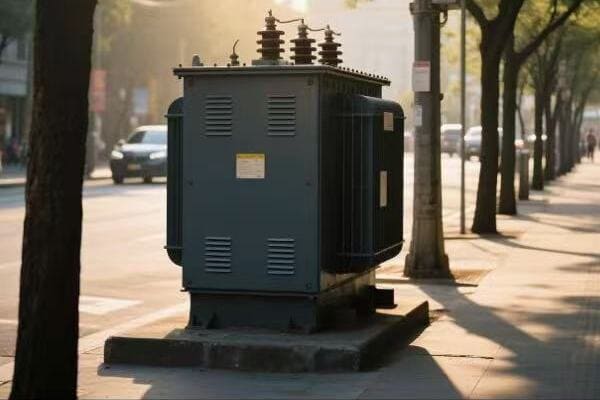
Let's dive into how predictive maintenance is revolutionizing grid operations:
Data Integration and Analysis
Combining multiple data sources for comprehensive insights:
- Integration of historical test data, real-time monitoring, and operational records
- Use of big data platforms to process and analyze large volumes of information
- Creation of holistic transformer health profiles
Machine Learning Algorithms
Identifying patterns and predicting future behavior:
- Development of models to predict transformer failures and performance degradation
- Continuous learning from new data to improve prediction accuracy
- Anomaly detection to identify unusual transformer behavior
Risk-Based Maintenance Planning
Prioritizing maintenance activities based on data-driven insights:
- Assessment of transformer criticality and health status
- Optimization of maintenance schedules to minimize downtime and costs
- Balancing of short-term needs with long-term reliability goals
Performance Optimization
Using data to enhance transformer and grid efficiency:
- Analysis of load patterns to optimize transformer sizing and placement
- Identification of energy loss hotspots in the grid
- Fine-tuning of transformer parameters for peak performance
Lifecycle Management
Making informed decisions about transformer replacement and upgrades:
- Accurate estimation of remaining useful life for each transformer
- Cost-benefit analysis of maintenance vs. replacement options
- Strategic planning for grid modernization initiatives
| Predictive Maintenance Aspect | Operational Benefit | Impact on Grid Optimization |
|---|---|---|
| Data Integration | Comprehensive health assessment | Informed decision-making |
| Machine Learning | Accurate failure prediction | Reduced unexpected outages |
| Risk-Based Planning | Efficient resource allocation | Optimized maintenance costs |
| Performance Optimization | Enhanced energy efficiency | Improved overall grid performance |
| Lifecycle Management | Strategic asset management | Long-term grid reliability |
I remember implementing a predictive maintenance system for a large utility company. Within the first year, the system predicted a potential failure in a critical substation transformer. We performed targeted maintenance, avoiding what could have been a major outage. The utility's operations manager told me, "This system just paid for itself ten times over in one go."
Another eye-opening experience was using predictive analytics to optimize the maintenance schedule for a rural power network. By analyzing years of test data and operational records, we created a dynamic maintenance plan that reduced unnecessary inspections while catching issues earlier. A senior technician remarked, "We're working smarter now, not harder. It's completely changed how we approach maintenance."
These experiences have shown me that predictive maintenance is more than just a technological upgrade – it's a paradigm shift in how we manage our power grids. By leveraging the wealth of data from transformer tests and ongoing monitoring, we're not just reacting to problems; we're anticipating and preventing them. This proactive approach is key to building more reliable, efficient, and resilient smart grids. As we continue to refine these predictive capabilities, we're paving the way for a future where grid disruptions become increasingly rare, and our energy infrastructure operates at peak efficiency.
Renewable Integration: The Role of Transformer Testing in Sustainable Power Networks?
As renewable energy sources become more prevalent, how does transformer testing adapt to ensure the reliability and efficiency of our evolving power networks?
Transformer testing plays a crucial role in renewable integration by verifying the ability of transformers to handle variable loads, bidirectional power flows, and power quality issues associated with renewable sources. These tests ensure transformers can effectively support the transition to sustainable power networks.
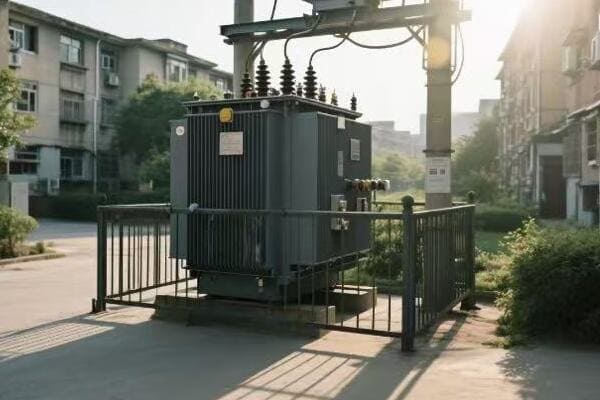
Let's explore how transformer testing is evolving to support renewable integration:
Variable Load Testing
Simulating the fluctuating nature of renewable sources:
- Testing transformers under rapidly changing load conditions
- Assessing performance with simulated solar and wind power inputs
- Verifying voltage regulation capabilities in variable generation scenarios
Bidirectional Power Flow Evaluation
Ensuring transformers can handle power in both directions:
- Testing for efficient operation during periods of excess renewable generation
- Evaluating transformer performance when feeding power back to the grid
- Assessing the impact of reverse power flow on transformer lifespan
Harmonic Distortion Analysis
Addressing power quality issues from renewable inverters:
- Measuring transformer response to various harmonic profiles
- Testing harmonic mitigation capabilities
- Evaluating the impact of harmonics on transformer heating and efficiency
Fault Ride-Through Capability
Ensuring grid stability during renewable energy fluctuations:
- Testing transformer response to sudden changes in renewable power output
- Evaluating the ability to maintain voltage levels during grid disturbances
- Assessing coordination with renewable energy system protections
Energy Storage Integration Testing
Verifying compatibility with battery systems:
- Testing transformers with simulated energy storage charge/discharge cycles
- Evaluating performance under combined renewable and storage scenarios
- Assessing the impact of rapid power transitions on transformer health
| Test Category | Renewable Integration Challenge | Impact on Sustainable Networks |
|---|---|---|
| Variable Load | Fluctuating power generation | Stable grid operation |
| Bidirectional Flow | Excess power feed-back | Efficient energy distribution |
| Harmonic Analysis | Power quality issues | Improved overall power quality |
| Fault Ride-Through | Grid stability concerns | Enhanced network resilience |
| Storage Integration | Balancing supply and demand | Optimized renewable utilization |
I recall a project testing transformers for a large solar farm integration. We simulated a year's worth of solar generation patterns, including rapid fluctuations due to cloud cover. One transformer model showed unexpected behavior during sudden output drops. This led to a redesign of its voltage regulation system, ultimately improving the stability of the entire solar farm output. The project manager said, "Your tests just made our renewable integration a whole lot smoother."
Another fascinating experience was testing transformers for a wind farm with integrated battery storage. We had to develop new test protocols to account for the complex interactions between wind variability and battery charge/discharge cycles. The results led to a novel control algorithm that significantly improved the overall system efficiency. A grid operator remarked, "We're not just connecting renewables to the grid; we're creating a whole new paradigm of energy management."
These experiences have shown me that transformer testing for renewable integration is not just about ensuring basic functionality. It's about reimagining our power systems to be more flexible, resilient, and sustainable. As we push towards a greener energy future, the role of transformer testing becomes increasingly critical. It's not just about maintaining grid stability; it's about enabling the full potential of renewable energy sources.
By adapting our testing methods to the unique challenges of renewable integration, we're paving the way for a more sustainable and efficient power network. Each test we conduct, each challenge we overcome, brings us one step closer to a future where clean, renewable energy is the norm rather than the exception. As we continue to innovate in this field, I'm excited to see how transformer testing will evolve to meet the ever-changing demands of our sustainable power networks.
Conclusion
Distribution transformer testing is crucial in ensuring grid reliability and efficiency in smart energy systems. It encompasses advanced protocols, modern diagnostics, adaptive methods for smart grids, predictive maintenance, and support for renewable integration, shaping the future of sustainable power networks.


